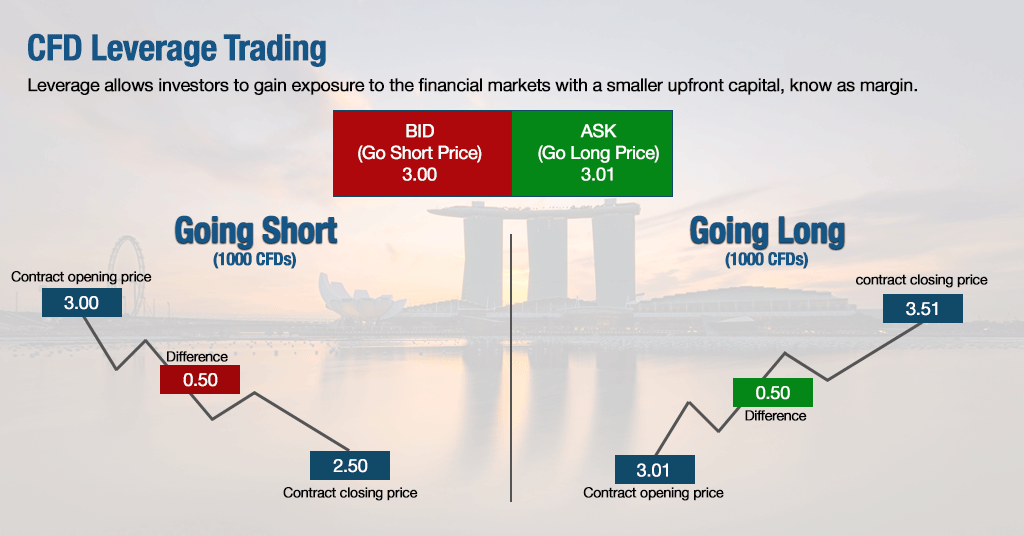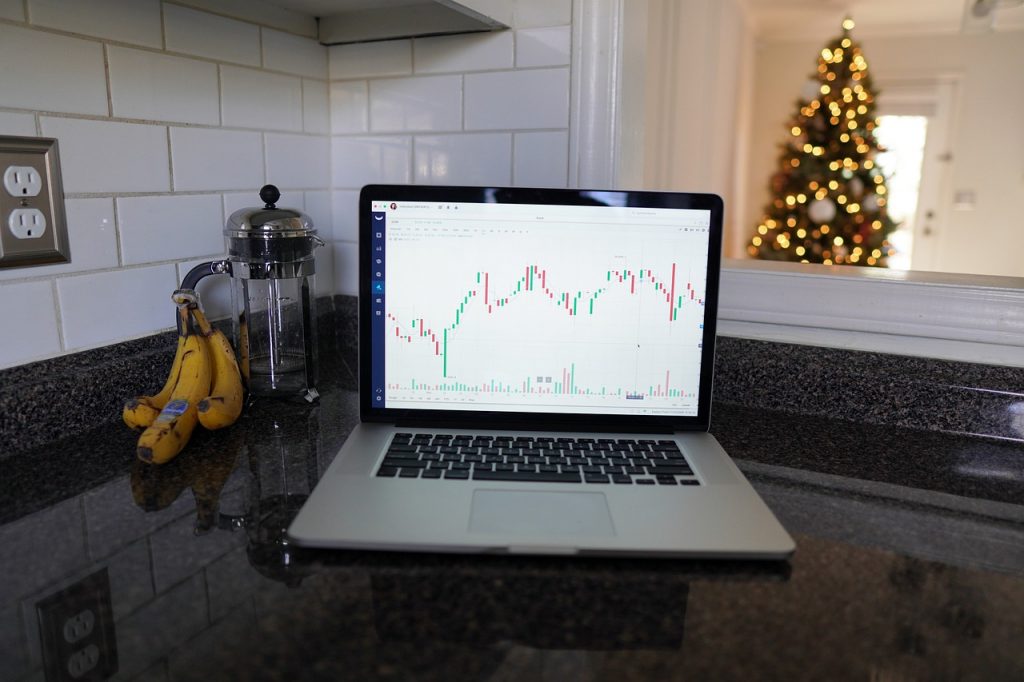Have you ever wished you could profit from the fluctuations of global markets, even if you didn’t have the capital to invest directly in stocks or commodities? The world of CFD trading might be your answer. CFDs, or Contracts for Difference, offer a unique way to participate in these markets, but understanding their complexities is crucial. This comprehensive guide will delve into the world of CFD trading, exploring the mechanics, risks, and opportunities they present.

Image: www.phillipcfd.com
Imagine you believe the price of gold will rise in the coming weeks. With a traditional investment, you’d need to buy actual gold, a process requiring significant capital. But with CFDs, you can speculate on the price movement of gold without physically owning it. This opens up a world of possibilities for investors, but it’s an equally complex one. Let’s dissect the intricacies of CFD trading and explore how it might fit into your investment strategy.
Understanding the Fundamentals of CFD Trading
At its core, CFD trading is a form of derivative trading. Instead of buying or selling the underlying asset like stocks, commodities, or currencies, you’re essentially entering into a contract agreeing to pay the difference in the price of the asset between when you open the contract and when you close it. If the price moves in your favor, you profit; if it moves against you, you experience a loss.
The Mechanics of CFD Trading
To illustrate, let’s imagine the price of Apple shares is currently $150. You believe the price will go up in the near future and decide to open a CFD contract for 100 shares, agreeing to buy them at $150. If the price of Apple shares rises to $160, you close the contract, making a profit of $10 per share (the difference between the opening price and closing price) or $1000 in total. Conversely, if the price drops to $140, you’d experience a loss of $10 per share, or $1000.
Leverage: A Double-Edged Sword in CFD Trading
One of the most defining aspects of CFD trading is the leverage offered. Leverage allows you to control a much larger position in a market with a smaller initial investment. For example, with a leverage of 1:5, you could open a $1000 position with only $200 as your initial investment. While leverage can amplify your profits, it can also amplify your losses. This makes risk management exceptionally crucial in CFD trading.

Image: fx-trade.ch
CFD Trading Platforms: Your Gateway to the Market
Access to CFD trading lies within online trading platforms. These platforms offer a range of tools and features designed for CFD traders, including:
- Real-time market data: Keeping a pulse on market movements is paramount. Trading platforms provide live price charts, news feeds, and economic calendars to help you make informed decisions.
- Market analysis tools: From moving averages to technical indicators, trading platforms equip you with tools to analyze market data and identify potential trading opportunities.
- Order types: Various order types allow you to control your entry and exit points in the market, setting stop-loss orders to manage risk and limit potential losses.
- Margin management: Trading platforms usually require a margin account to cover your trades. It’s essential to understand and manage your margin requirements to ensure you have sufficient funds to cover potential losses.
The Allure of CFD Trading: Advantages and Opportunities
Despite its inherent complexities, CFD trading beckons investors with its own set of advantages and opportunities:
Versatility and Accessibility: Trading a Diverse Range of Assets
CFD trading unlocks the potential to speculate on a vast spectrum of assets, including:
- Stocks: Trade shares of global companies, even if you don’t have the funds to purchase them outright.
- Commodities: Engage in the trade of raw materials like oil, gold, and silver, potentially profiting from price fluctuations.
- Currencies: Trade foreign exchange (forex) pairs, capitalizing on currency fluctuations across global markets.
- Indices: Trade major stock market indices such as the S&P 500 or FTSE 100, reflecting the performance of entire market sectors.
Leverage: Amplifying Gains and Losses
Leverage can act as a double-edged sword. While it can amplify your potential profits, it can also magnify your losses. This makes it imperative to employ sound risk management strategies and only trade with capital you can afford to lose.
Short-selling: Profiting from Falling Prices
CFDs allow you to short-sell assets, meaning you can profit when the price of an asset falls. This strategic approach can be particularly valuable in bearish markets.
Going Long: Capitalizing on Rising Prices
If you believe an asset’s price will rise, you can “go long” by opening a CFD position, potentially profiting from the price increase.
Trading Flexibility: Round-the-clock Access
Many CFD trading platforms offer 24/5 trading, allowing you to participate in markets even when they’re closed in your time zone. However, this also means you have to be constantly aware of global events that can influence price movements.
Navigating the Risks: A Look at the Flip Side
CFD trading, despite its allure, carries significant risks that need careful consideration.
Leverage: A Double-Edged Sword
While leverage can amplify your profits, it can also magnify your losses. You could lose more than your initial investment if the market moves against you.
Volatility: The Unpredictability of Markets
Markets are inherently volatile. In CFD trading, even small price fluctuations can lead to significant losses, especially with leverage.
Margin Calls: A Threat to Your Position
If your position moves against you, your trading platform may issue a margin call demanding additional funds to cover potential losses. Failing to meet this will result in the closing of your position, potentially leading to substantial losses.
Lack of Asset Ownership: No Dividends or Voting Rights
With CFDs, you don’t actually own the underlying asset. You only profit from the price difference. This means you won’t receive dividends or have any voting rights associated with the asset.
High Transaction Costs: Commissions and Spreads
CFD trading platforms usually charge commissions or spreads, which can erode your profits, especially with frequent trading.
Market Manipulation: The Potential for Unfair Practices
Certain brokers or market participants might engage in manipulative practices, potentially affecting the price of assets and impacting your trades.
Expert Insights for Successful CFD Trading
To navigate the complexities of CFD trading, seek advice from seasoned financial professionals or experts specializing in CFD trading. They can provide valuable insights and steer you towards informed decision-making.
Risk Management: The Cornerstone of Success
Risk management is paramount. Always understand and adhere to your risk tolerance. Employ stop-loss orders to limit potential losses, and diversify your portfolio across different assets.
Education is Key: Continual Learning
Continuously educate yourself about CFD trading, market dynamics, and risk management. Stay updated on global economic events and news that could impact your trades.
Choosing the Right Platform: A Crucial Decision
Selecting a reputable trading platform is crucial. Research, compare platforms, and consider factors like trading fees, customer support, and regulatory compliance.
Avoid Overtrading: Patience is a Virtue
Don’t rush into trades. Implement a well-defined trading plan based on solid analysis and a thorough understanding of the market.
What Are Cfds Trading
Concluding Thoughts: A Journey of Learning and Growth
CFD trading, while offering compelling opportunities, also presents substantial risks. Approach it with an open mind, seeking guidance from experts and prioritizing education. Never trade with money you can’t afford to lose. By diligently managing risk, staying informed, and mastering the intricacies of CFD trading, you can harness its potential for growth and navigate the complexities of the global markets.
Are you ready to embark on your journey into the world of CFD trading? Share your experiences, ask questions, and delve deeper into the complexities of this dynamic market.







